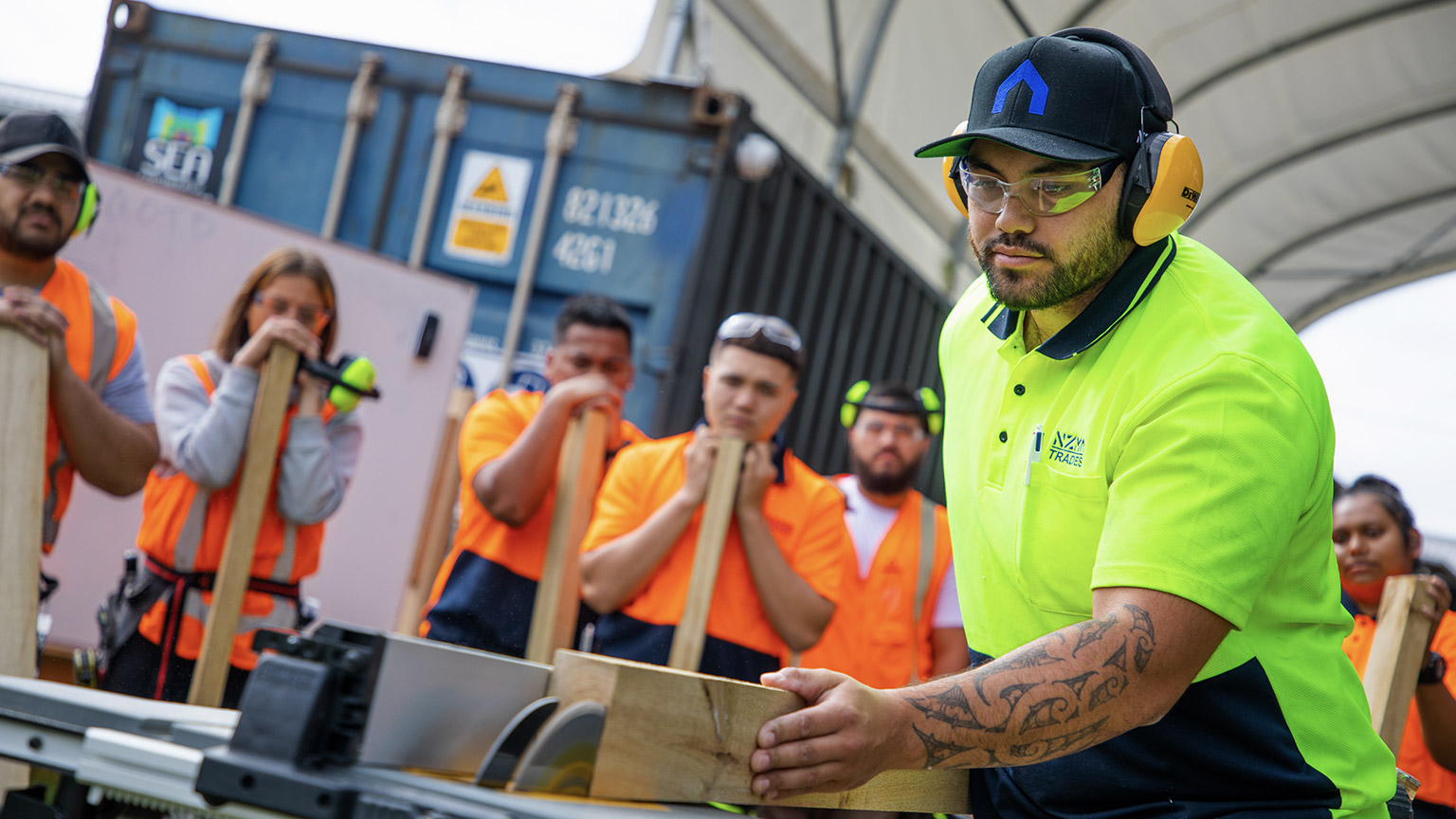Welcome to the Identifying Training Activities topic.
This is the first topic of our Implementing Training Activities module.
The learning outcome of this module is to identify performance and capability gaps within the team, supervise skill development for a residential construction team and evaluate its effectiveness.
Module 9 Introduction from Will
Click ‘Video Transcript’ or the plus icon (+) to expand and reveal the transcript for the previous video.
Welcome to this module on Implementing Training Activities. The learning outcome of this module is to identify performance and capability gaps within the team, supervise skill development for a residential construction team and evaluate its effectiveness. In this topic of Implementing Training Activities, we will aim to cover the following: Identifying team training needs. Addressing and coordinating team training needs. Eliciting feedback to determine the effectiveness of training activities. Identification of additional training needs required. Managing and leading from a Māori perspective. So, let’s get into it.
Reflection
Let’s start this topic with a self-reflection.
Have you done a training activity recently?
Have you assessed your team’s performance this year and addressed the skills gap with a training session?
If you had answered; Yes! Then, you’re on the right track and will find these topics a great way to supplement your current approach as a supervisor.
If you answered, no or not recently, then these topics will up your game in identifying training activities for your team.
Just like any other job in every other industry, it is easy to get stuck in a rut and do the same old, same old. You might be thinking; I know what needs to be done, why should I be bothered to do a training activity or organise one for the team?
Hold that thought and ponder through the following illustration by Sketchplanation.
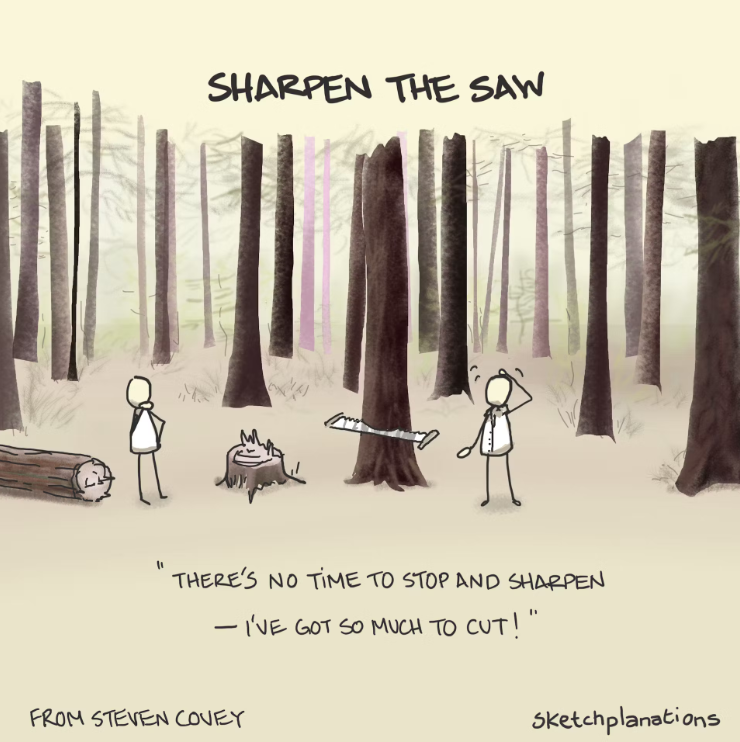
‘Sharpen the saw’ is habit seven of Steven Covey’s classic The 7 Habits of Highly Effective People.
As the metaphor suggests, you might think you’re too busy to take a moment and sharpen the saw. But once you do it, you’ll realise you can’t afford not to.
When you’re fully engrossed in your work, it might seem impossible to take a break. You might feel like there’s too much to do, leaving no time to pause, reflect on your methods, or engage in training!
It’s really important to take a breather once in a while, look at how things are going, and make sure you’re taking care of yourself. This helps keep you sharp and on top of things when working in residential construction.
Using self-refection to identify training needs
Incorporating a self-reflection strategy process into your work tasks will become a part of everything you do.
These methods will clarify your responsibilities and inspire you to work more efficiently. By making enhancements, you’ll boost your productivity and efficiency while pinpointing ways to improve for future projects.
Identifying performance requirements
To identify performance requirements, you need to ask yourself:
How can an organisation tell if tasks in the operational plan are achieving strategic goals?
Let’s start by discussing the importance of setting goals in an organisation using this four-step approach:
Step 1: Goals
- It is crucial to have a goal; this provides you with something to work towards.
- To achieve goals, they should be broken down into achievable steps and offer guidance towards your end goal.
Step 2: Distribution of goals
- In an organisation, end goals and visions are agreed upon. These give staff a focus and motivation.
- When the goals are broken down and shared with specific departments, teams and individuals, this provides a clear plan to staff.
- Achieving these goals will lead to achieving the company’s overall vision.
Step 3: Track and monitor goals
- One method to ensure that individuals are working towards the organisational goals is to check, monitor, constantly assess and update their tasks or responsibilities.
- The typical way to do this was for the managing director to lay out their expectations of each department and allow those expectations to trickle down to the lower levels.
- However, the flow of expectations and goals in this method is one-way, meaning high-level company goals are left open to interpretation by individual managers, creating too much risk of getting off track or misinterpretations to happen.
Step 4: Key Performance Indicators (KPIs)
- You can guarantee that operational plans fit with the company’s performance by ensuring everyone understands the direction they are going in and what they are aiming for.
- That is why many organisations set up Key Performance Indicators (KPIs) for their employees.
- KPIs are measurable data devised within operational plans.
Let’s look at KPI a little bit more closely.
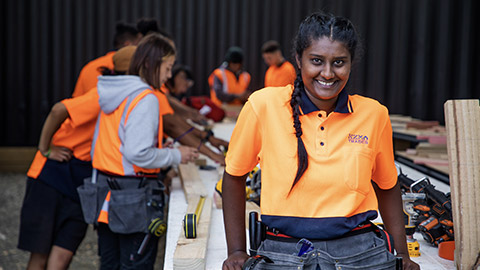
A Key Performance Indicator (KPI) is a quantifiable measure of performance over time for a specific objective.
KPIs provide targets for teams to aim for, milestones to gauge progress, and insights to help people make better decisions. For example, if the achievement of critical project milestones is a specific objective of the building project, then one KPI could be monitoring the number of checks per day, week, or month.
Measures and metrics
What gets measured gets done
In the construction industry, while completing the building project is an important measure of success, it's not the only factor to consider. Achieving client satisfaction, minimising environmental impact, and optimising resource utilisation are equally important indicators of success. Therefore, the number of outcomes achieved across these different areas should be considered when evaluating the overall success of a construction project.
KPIs are the elements of your plan that express what you want to achieve and by when. They are the quantifiable, outcome-based statements you will use to measure whether or not you are on track to meet your goals or objectives.
A good plan is to use five to seven KPIs to manage and track the plan's progress. They are an excellent measure of the contribution of a team or an individual to the organisation.
The purpose of a key performance indicator
KPIs offer an objective performance measure in a key task. This allows organisations to set and share their performance targets and assess whether they are being fulfilled.
Areas of improvement are identified and emphasised, therefore allowing for adjustments to be put in place that lead to measurable performance improvements.
Note
KPIs will vary according to the nature and objective of the organisation.
They will also vary in terms of the purpose, values and culture of the organisation.
It is crucial to be careful when choosing the KPIs of your team or organisation and make sure that they align with the business.
What could you use to create a KPI?
You should measure your performance against key business objectives; you can use these objectives to help create KPIs for individuals and across teams.
KPIs will be specific to different organisations and, ultimately, will be connected to the core goals that the business wants to achieve: from customer satisfaction to sales to quality administration.
Here are some examples of what you could potentially measure a Key Performance Indicator (KPI) against for a construction team member:
-
How well they do tasks. Measure the team member's ability to complete construction tasks accurately and precisely, following blueprints and instructions without errors.
-
Meeting deadlines. Assess the team member's ability to finish construction tasks within the specified time frame, showing they can manage time effectively.
-
Quality of work. Evaluate the quality of the team member's workmanship, including attention to detail, craftsmanship, and following industry standards.
-
Safety compliance. Measure how well the team member follows safety protocols and regulations on the construction site, ensuring everyone's safety.
-
Learning and growth. Track the team member's progress in learning new construction skills and knowledge over time, showing they're improving and developing in their role.
How to develop a KPI
In order to develop effective KPIs, you need to consider how they might relate to specific business objectives or desired outcomes. They need to be adapted to your business’s current situation and developed with the achievement of the organisation’s goals in mind.
There are different approaches to developing KPIs:
Resource
The following articles explain the different types of KPIs and how to write these effectively:
Writing a clear objective for your KPI is one of the most important—if not the most important—part of developing KPIs.
Other things you need to consider include:
- Making sure the KPI is actionable
- How you will share your KPI with stakeholders
- Creating a plan to review the KPI on a weekly or monthly basis
- Evolving your KPI to fit the changing needs of the business.
Watch
Watch the following almost 7-minute video to learn more about developing effective KPIs:
Three questions to recap the points from the previous video:
KPIs should be S.M.A.R.T.
S.M.A.R.T. goal setting provides the goals and objectives you identify with structure, and allows for accountability through measurement of progress.
This type of goal setting enables you to take a vague, usually conceptual objective, and make it a tangible, achievable objective, with clear milestones and prospective timelines to satisfy the goal.
Each goal and objective, from the beginning of the process, should be thought through and planned in the S.M.A.R.T. format, to not only make it more realistic, but easier to grasp.
- Specific: specific to an objective
- Measurable: able to be measured somehow
- Achievable: realistic to the objective and resources available
- Relevant: reflects the goals of the organisation
- Time-related: sets when it must be achieved by
Documentation Tool exercise
The following is a Documentation Tool exercise for you to practice identifying training needs and setting KPIs.
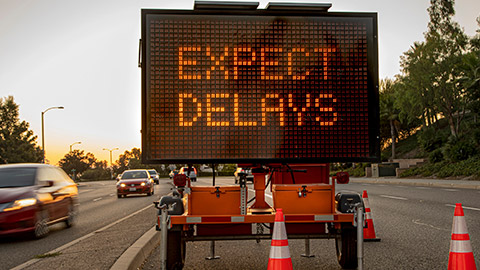
Just as you check the signs along a highway when taking a road trip, it is just as important to ensure that development is on the right track.
Before completing your plan, you must agree on how and when it will be monitored and reviewed, plus what information everyone needs to receive to review progress. A key step in any planning process is to monitor and evaluate progress.
Supervisors should document and update the performance of machinery, services and employees. The information recorded about the performance of machinery and services should be made available to anyone within the organisation who would benefit from such information. This includes other departments you are in contact with or those searching for ideas.
Team Members' Performance
Keeping track of how everyone's doing in the construction industry is pretty casual. We jot down notes about what's happening, like what workers are doing and how things are going on the site.
When it's time for a review, it's usually a laid-back chat. Supervisors talk with the team about what they've been doing well and where they might need to step it up. They base it on what the job description says they should be doing.
In more serious situations, for example, if someone's not following the rules or doing something they shouldn't, we might have a sit-down chat to talk about it. Formal reviews and meetings can be scheduled and conducted to address serious breaches of policies or misconduct. We take these seriously to ensure everyone's on the same page and doing the right thing.
The performance of employees still needs to be documented by supervisors and by the human resources department (HR), if the company has one or by the managers. Employee records are highly confidential and should be kept under lock and key. Privacy laws should be taken into account when storing information about individuals.

Work-related training and education can have a wide range of onsite outcomes, both for the workers themselves and the project company.
These outcomes can be positive or negative, depending on various factors such as the quality of the training, the relevance of the education learning to the job, and the commitment of the learners themselves.
Companies should carefully plan and assess their training and education programmes to ensure they achieve the required desired outcomes.
Here are the top five outcomes associated with effective work-related training and education:
-
Improved job performance: Training and education can equip employees with new skills and knowledge that enhance their performance.
-
Increased productivity: A well-trained workforce tends to be more productive, resulting in higher efficiency and output.
-
Enhanced employee satisfaction and engagement: Opportunities for training and education can boost employee morale and job satisfaction, leading to higher levels of engagement.
-
Reduction in turnover: Employees who receive training and education may feel more valued by their organisation, which can reduce turnover rates.
-
Compliance and safety: Training ensures compliance with regulations and promotes a safe work environment for employees.
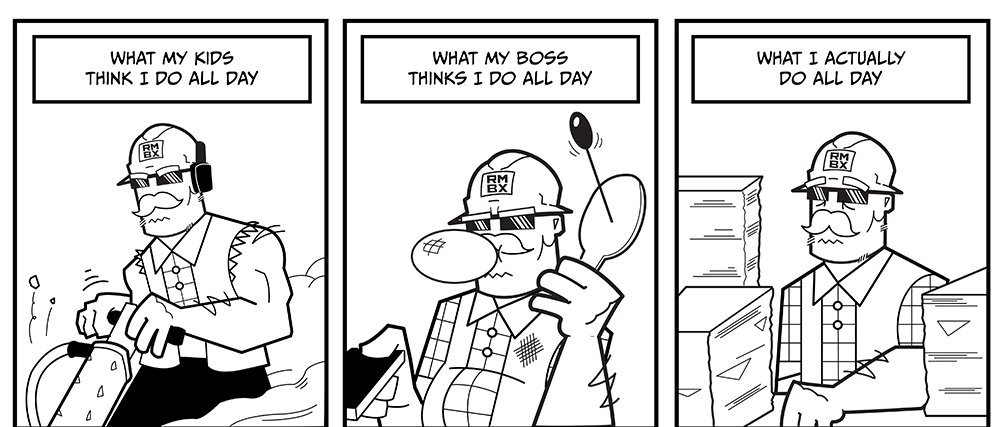
Rhumby Episode 20 by Rhumbix
The construction field has various trades, skills, and specialties. Collaboration among members allows for the sharing of this knowledge and expertise. Experienced members can pass on valuable insights and best practices to less experienced individuals, facilitating skill development and a deeper understanding of the industry.
The following are some ideas on the types of training activities that could be organised with the team:
- Hands-on skill experience
- Problem-solving
- Safety communication
- Potential conflict issues
- Efficiency
- Quality control and standard.
This interaction between members in your site training is essential for personal skill development, safety, teamwork, efficiency, and overall project success. It encourages knowledge transfer, fosters a collaborative and learning-oriented culture, and enables construction team members to adapt to the industry's dynamic nature.
Career progression pathway
Here are some common progression pathways for an apprentice or a team member.
-
Apprentice to Certified Tradesperson: Completing an apprenticeship programme and becoming a certified tradesperson in a specific trade recognised by industry standards in New Zealand, such as carpentry, plumbing, or electrical work.
-
Supervisor or Foreman: Advancing to a supervisory or foreman role, overseeing a team of workers on construction sites and ensuring projects are completed efficiently and according to local regulations and standards.
-
Project Manager: Transitioning into a project management role within the construction industry, where responsibilities include planning, coordinating, and executing construction projects across the country from start to finish.
-
Specialised Tradesperson: Pursuing further training and certification to specialise in a specific area of construction that is in demand in New Zealand, such as HVAC installation, concrete finishing, or roofing, to enhance job prospects and earning potential.
-
Construction Management: Advancing into a construction management position within the construction industry, where duties involve overseeing multiple projects, managing budgets and resources, and coordinating with clients, contractors, and other stakeholders.
Types of Career Advancements
As described above, training activities can lead to further career advancements. The following describes the two common trajectories of career advancements.
Sideways trajectory
Career advancements can be indicated by sideways trajectory, where the change might not be directly reflected by a change in job title or increased pay.
Job satisfaction is achieved through other avenues, such as gaining more skills, being involved in community projects or working towards becoming a business owner. Progression could also happen by moving towards a different field within the construction industry or giving back to the industry by working in training or education.
Here are two graduates from the NZMA trades campus who have made sideways career trajectory decisions.
Upward trajectory
Career advancements can also be indicated by an upward trajectory within an organisation, a change in responsibility and increased pay, as described below.
Options for training deliveries
There are various options for training deliveries; they are:
- On-the-job – learning by undertaking the work through an apprenticeship style model.
- Off-the-job – learning away from work weekly or daily, for example, attending a class on campus twice a week.
- Attendance at a tertiary provider – taking various qualifications alongside work commitments.
- Distance learning – learning not by attending school but by working through guided tuition, for example, a course online (like what you're doing now!)
- Open learning – distance learning courses with no set timeframe that you study at your own pace.
Accredited Qualifications
All New Zealand qualifications and credentials listed within the NZQCF (New Zealand Qualifications and Credentials Framework) are reviewed regularly. Reviews by all parties involved ensure the qualifications and credentials remain relevant and appropriate and meet the needs of learners and that industry, professional or academic communities.
Here is a wide range of accredited qualifications that can be worked towards:
- Apprenticeships - Work-based qualifications.
- Certificates and diplomas - These qualifications can be taken while working or in full-time study and are awarded at various levels.
- Licences to practise - For example, Licensed Building Practitioner (LBP) Certification.
- CPD (Company Professional Development) - Ongoing lifelong learning associated with your professional work status.
- Short courses relating to new developments - This includes updates to certain on-site regulations, including new supplier materials or plant machinery. All of which are worked through using BRANZ resources or publications.
New Zealand’s construction industry has various qualifications, certifications, and roles related to site management and supervision, each with its requirements and expectations; for further information on these, refer to your company’s policy and procedures.
How well do you know the different NZQF levels for common construction-related qualifications? Do some quick searching online to guide your answers, or just give it a go!
